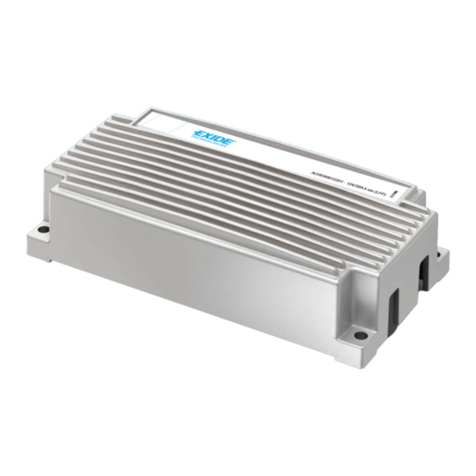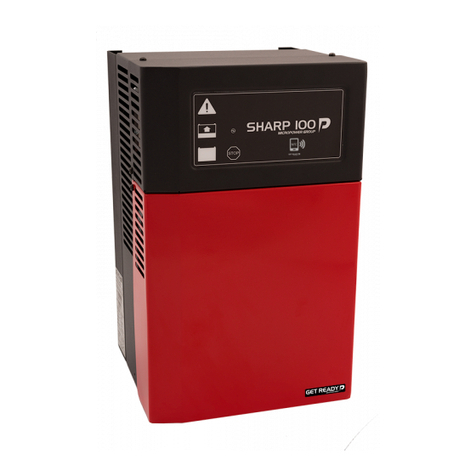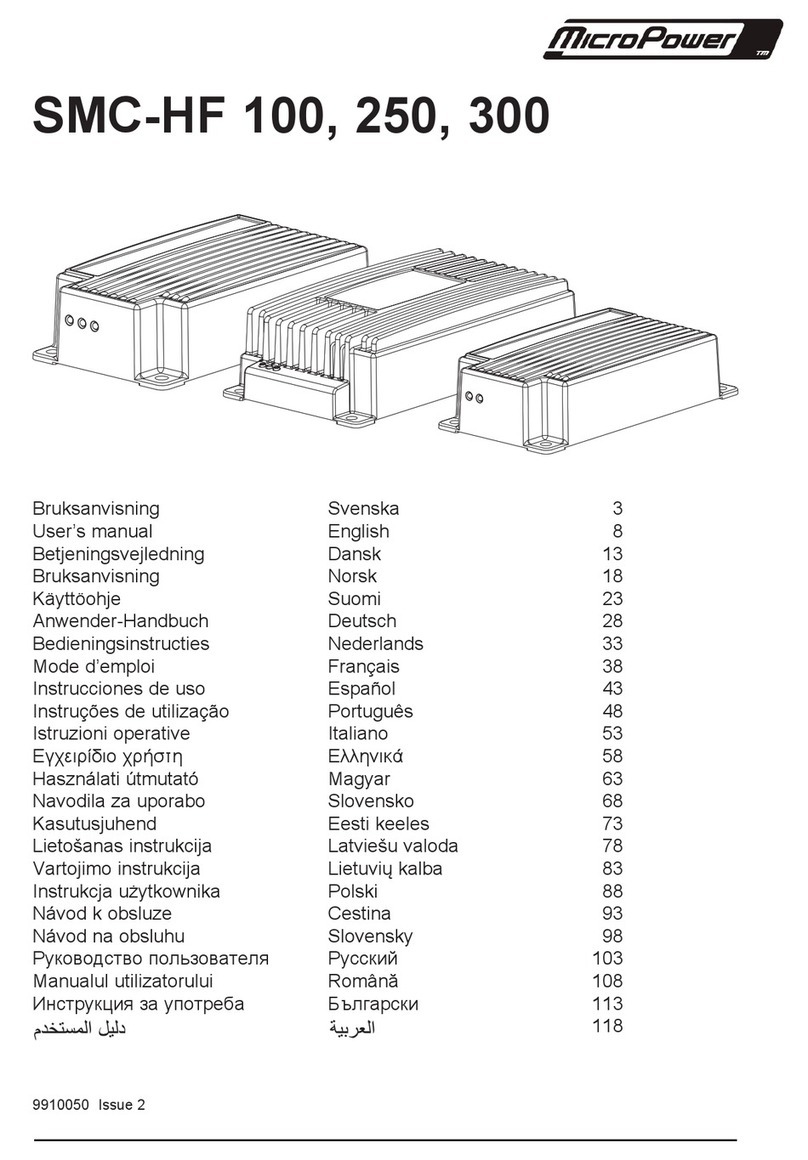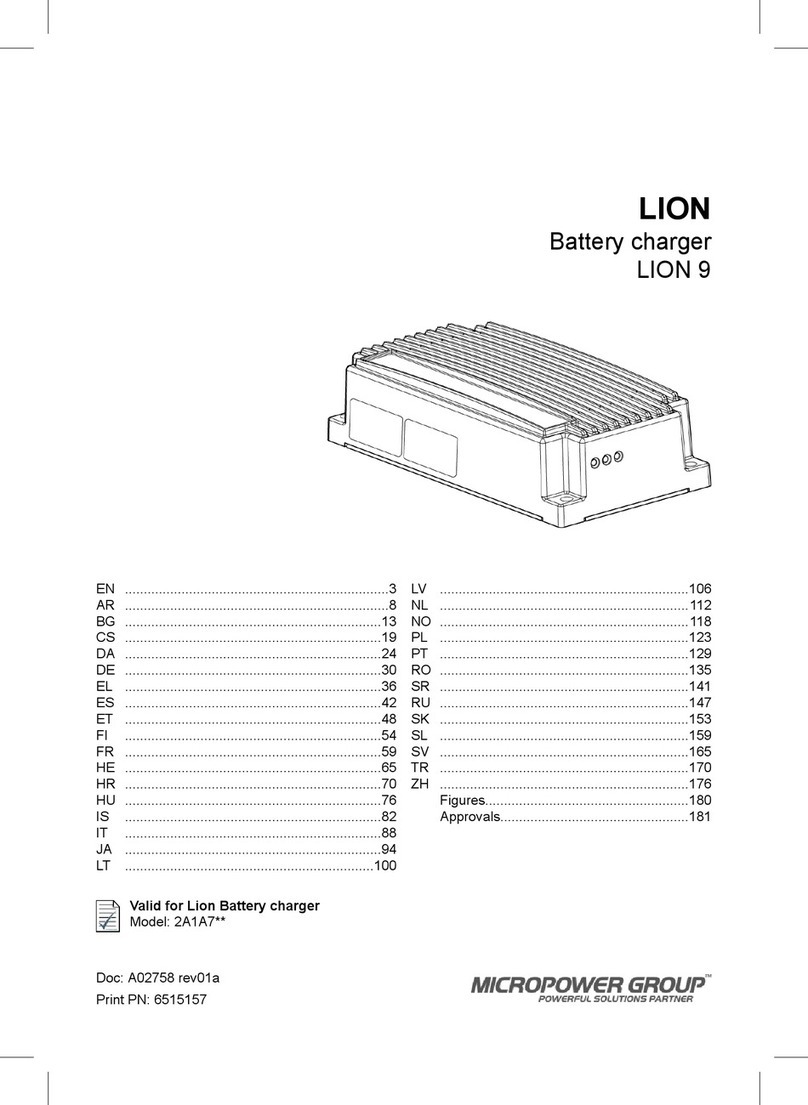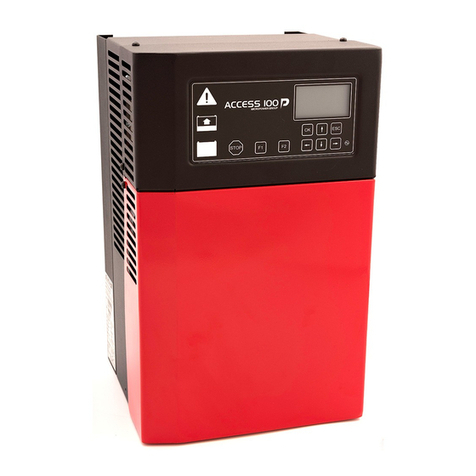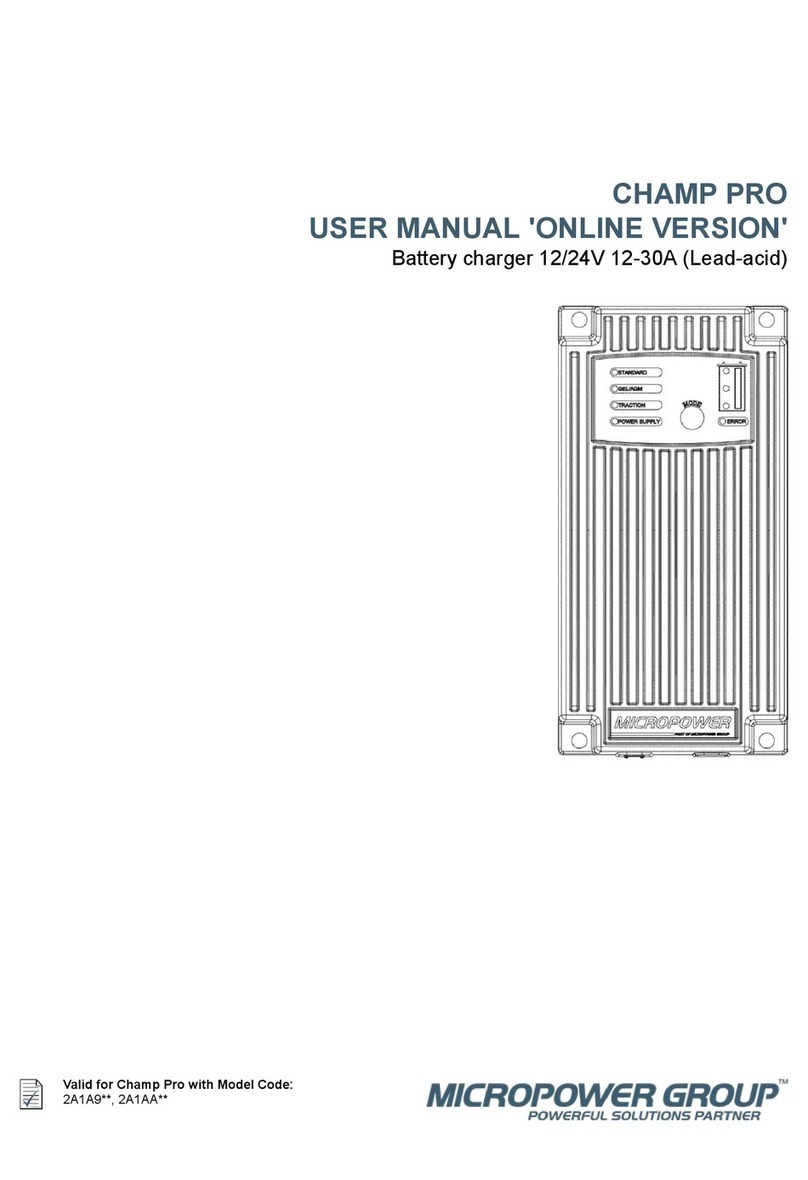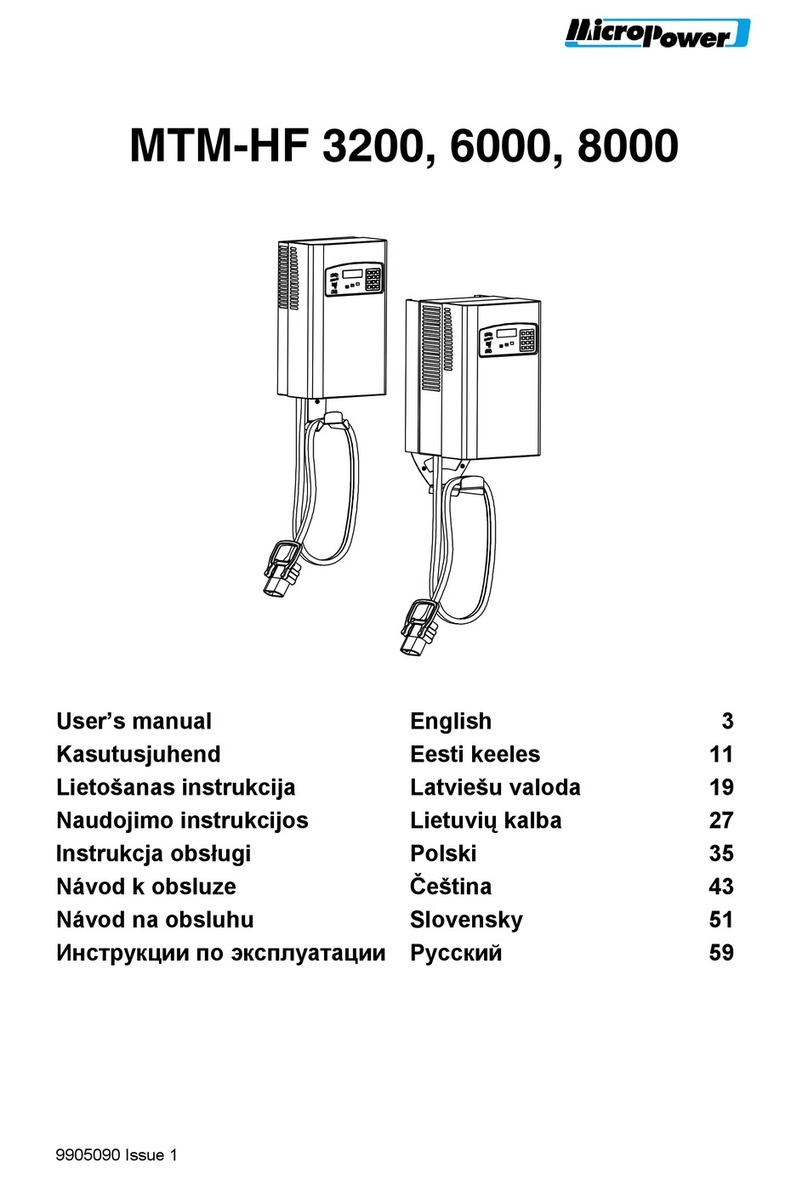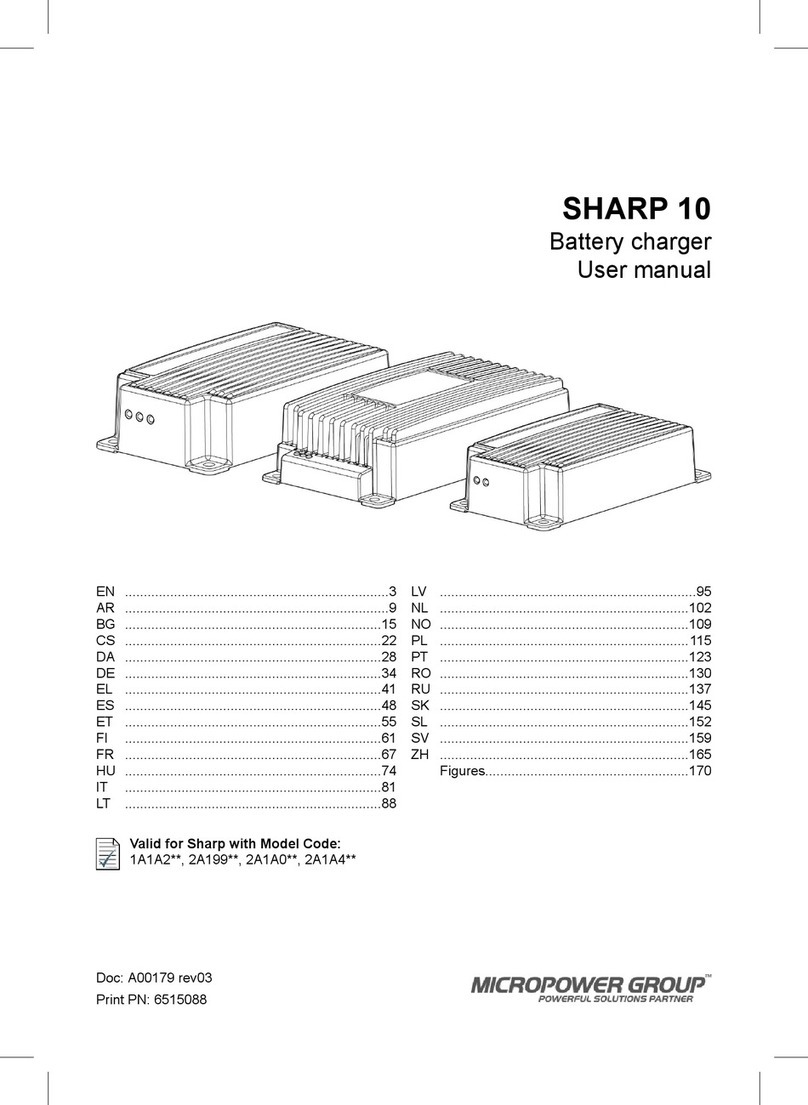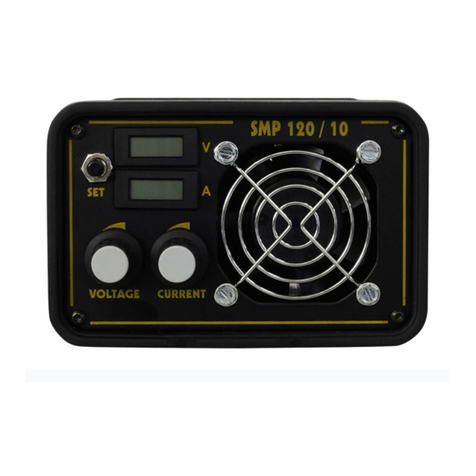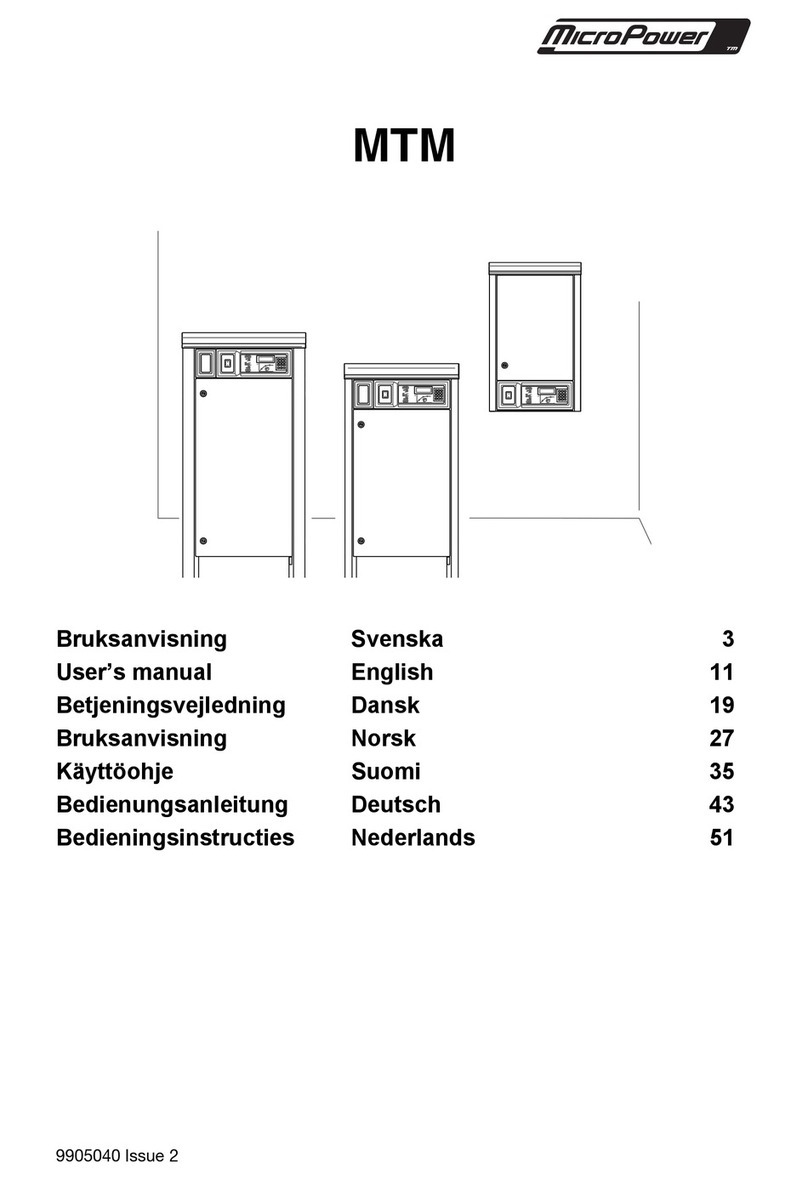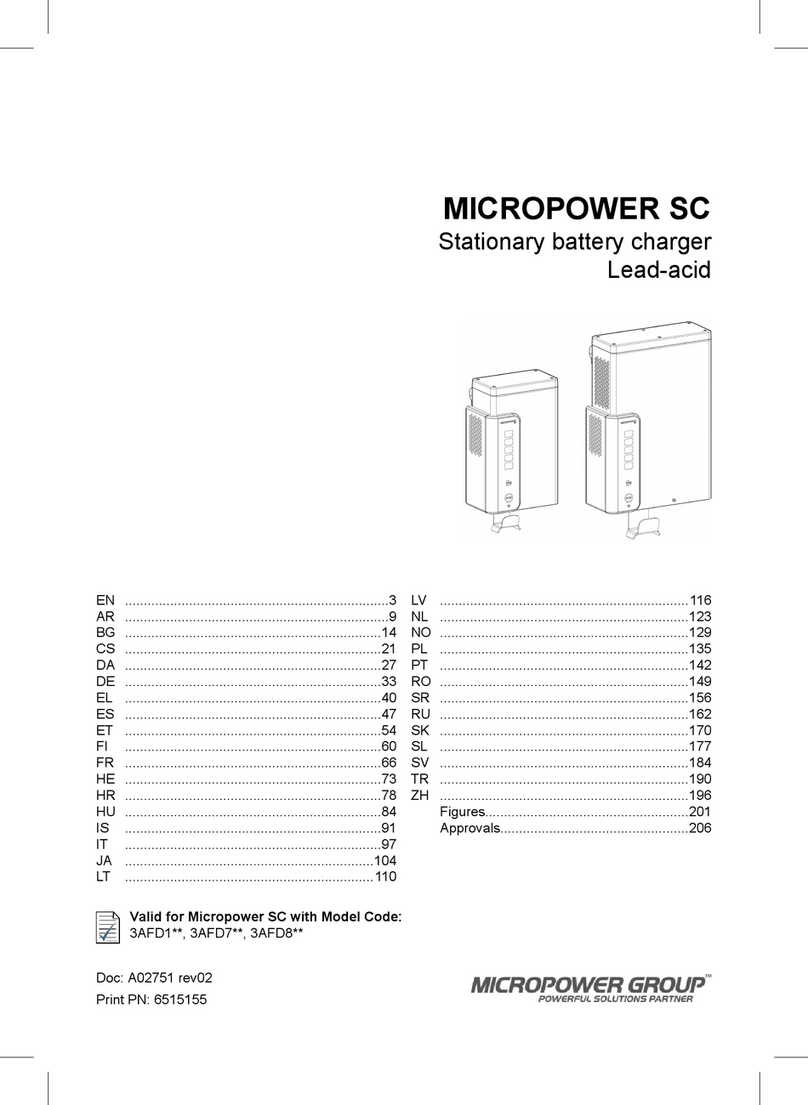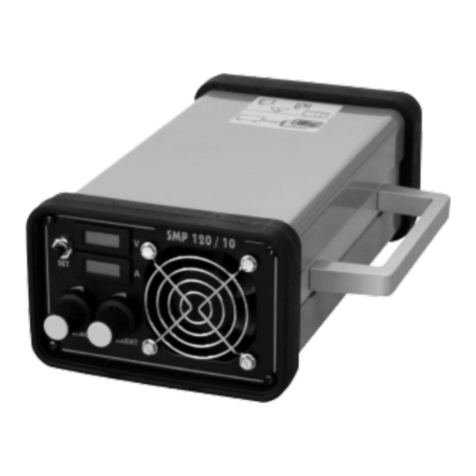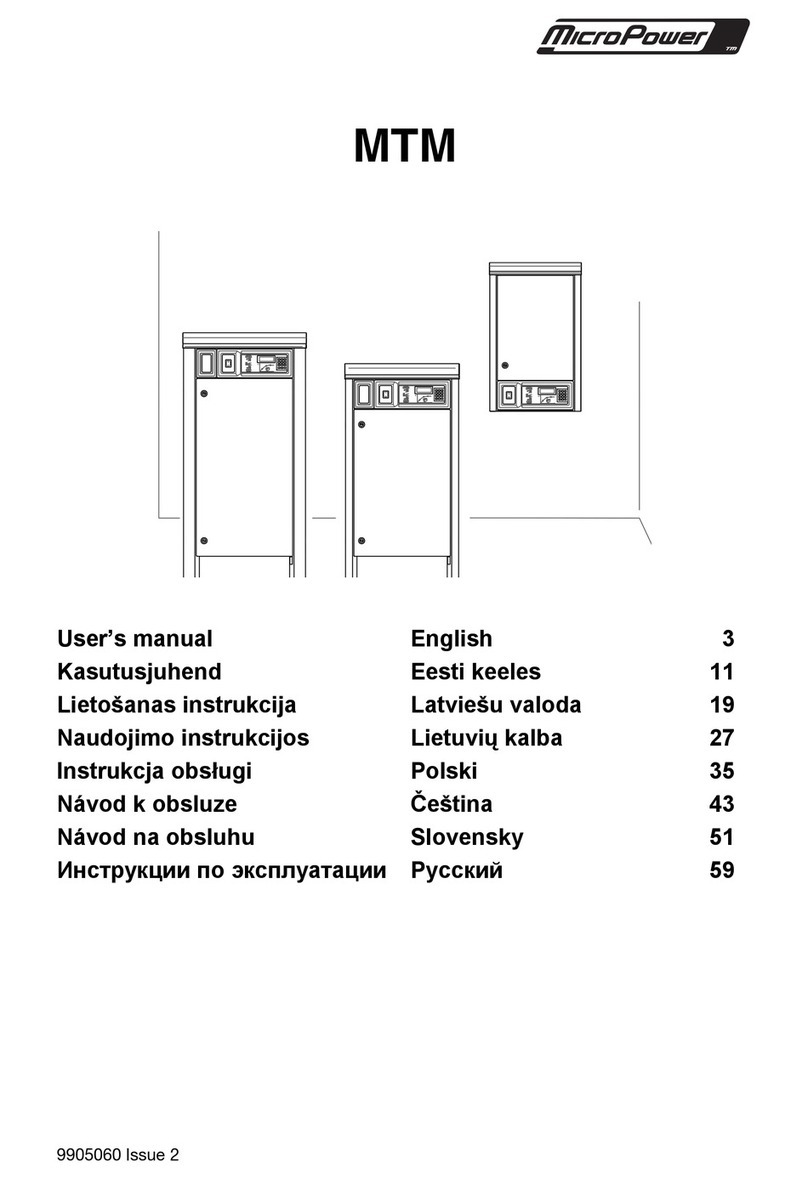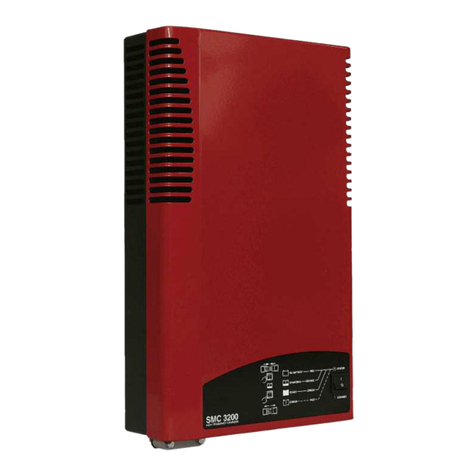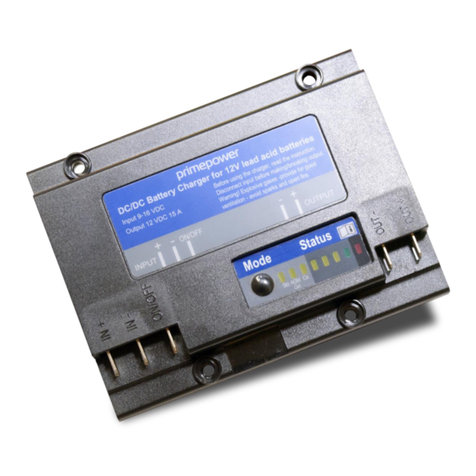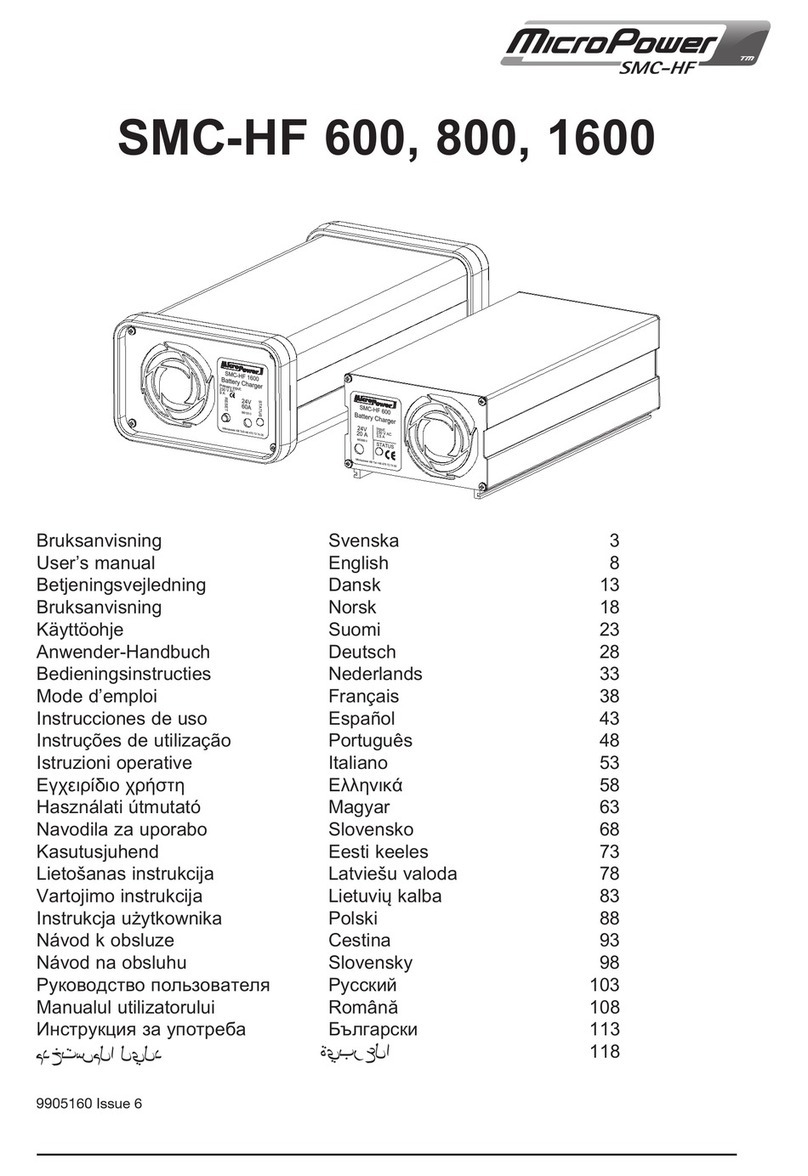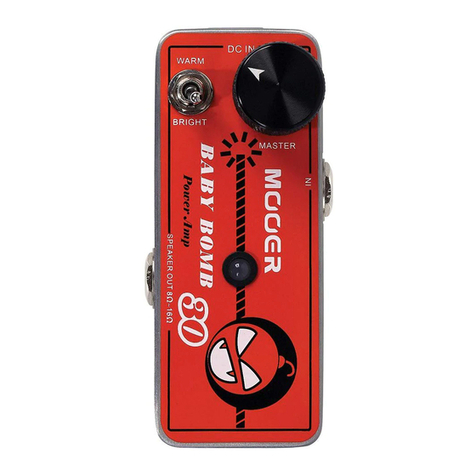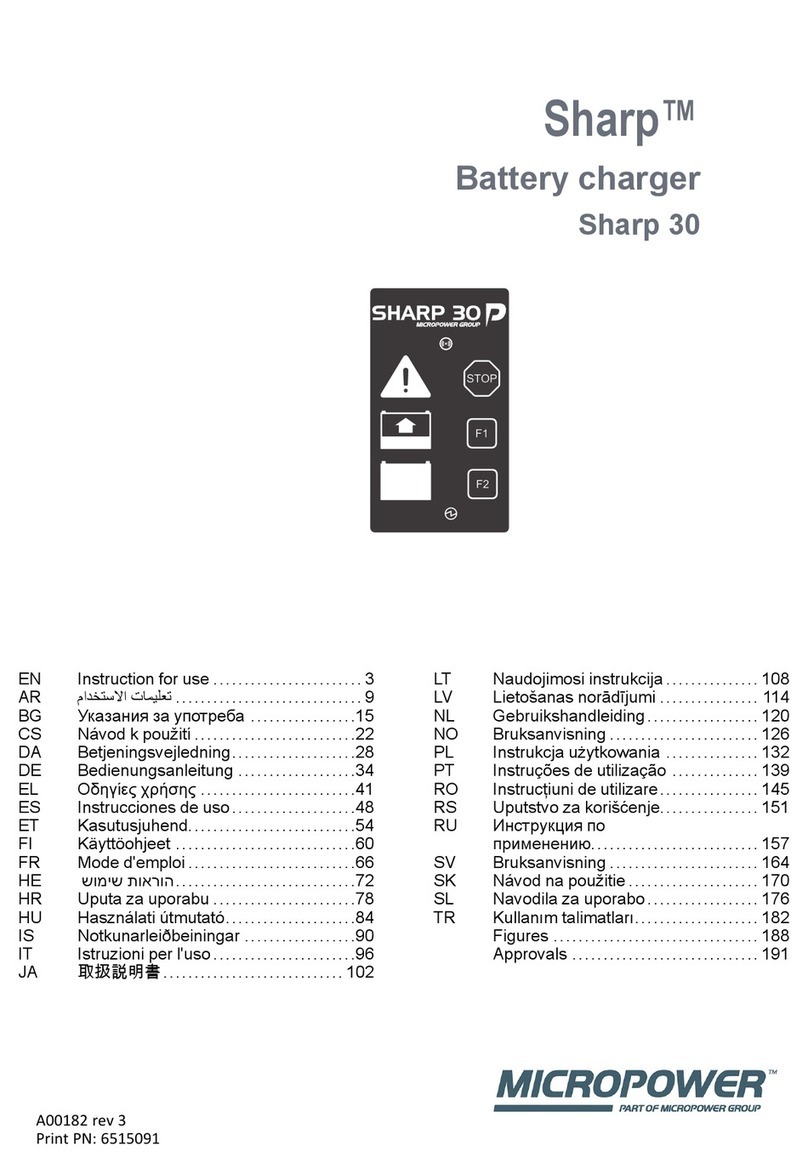
5 (30)
Document no.
99-99-111
Version
6
Date
2003-10-16
Sign.
ToNo
2 CHARGE CURVE
The MTM is able to charge in accordance with a number of charge curves so as to suit
any battery. A charge curve is often established by the battery manufacturer and consists
of various elements, such as constant current, constant voltage, pause, etc., as well as the
parameters, which control the various elements.
Changing the parameters which control current, voltage and charging times can give
different charging properties, such as a shorter charging time or very low maintenance
requirements. Your requirements should be discussed with the battery manufacturer
before making any changes to the charge curve. Inappropriate settings may shorten the
service life of your battery.
The MTM has functions for easily setting a number of predefined charge curves for
most battery types on the market.
2.1 The various phases of the charge curve
See also the figure in section 2.2 and the description of parameters in section 3.7.2
A Pump phase (all three LEDs flash and the error message “low dc voltage” is
displayed)
This charging phase appears in most charge curves. This phase starts if the battery’s
back voltage is more than 6 V but less than the lower start limit. This occurs in the event
of deep discharges due to too high a capacity drain.
Charging takes place with the I3 current up to max U3 voltage over approx 2 min. Then
charging pauses for approx. 10 s, during which time the back voltage is measured. If the
back voltage exceeds the voltage level Ug, the phase is terminated and the next charging
phase starts. If not, another 2 min charging phase begins. This goes on until the
approved voltage is attained. This function can be activated/disabled using the control
register.
B I0/U0 (first yellow LED comes on)
This charging phase is a precharging phase with constant current and constant voltage
used when short charging times are required. I0 is often higher than the battery’s 5-hour
current. The charging phase continues until U0 has been attained and the current has
fallen to I1 (the current for the next charging phase) or if the set max time, “max I0
time”, has been attained.
This element can be activated/disabled using the control register.
C I1 (first yellow LED comes on)
This is the first charging phase on a normal charge curve. It consists of a constant
current I1 until voltage U1 has been attained or the max time, max I1 time, has been
attained. The charging phase can also be terminated if the max number of Ah has been
exceeded or if the voltage levels out or even drops (battery fault dU).
D U1 (both yellow LEDs come on)
This phase is a constant voltage phase which continues until the current has fallen to the
set limit value, “start I2 phase”. The switchover to the next charging phase can be
delayed using the parameter “Min I1U1 time”.
During this charging phase, voltage drops also take place, with the relevant
